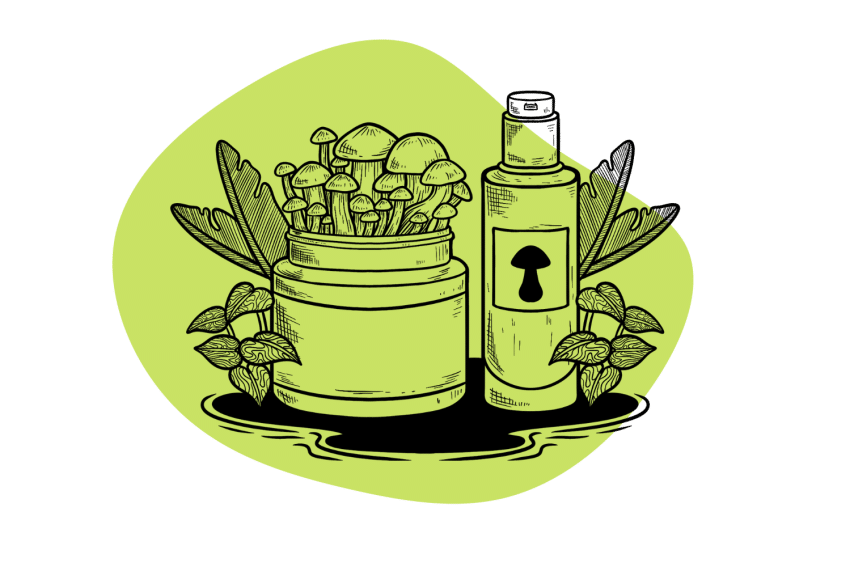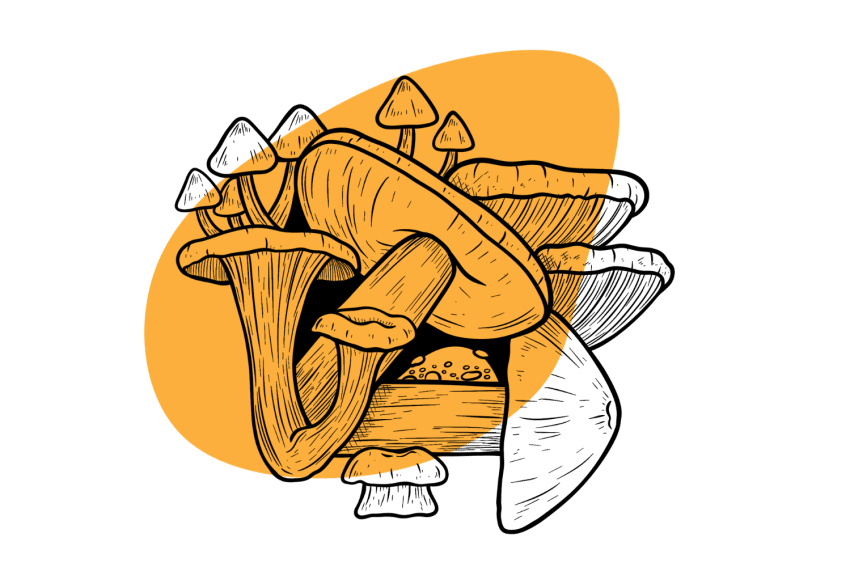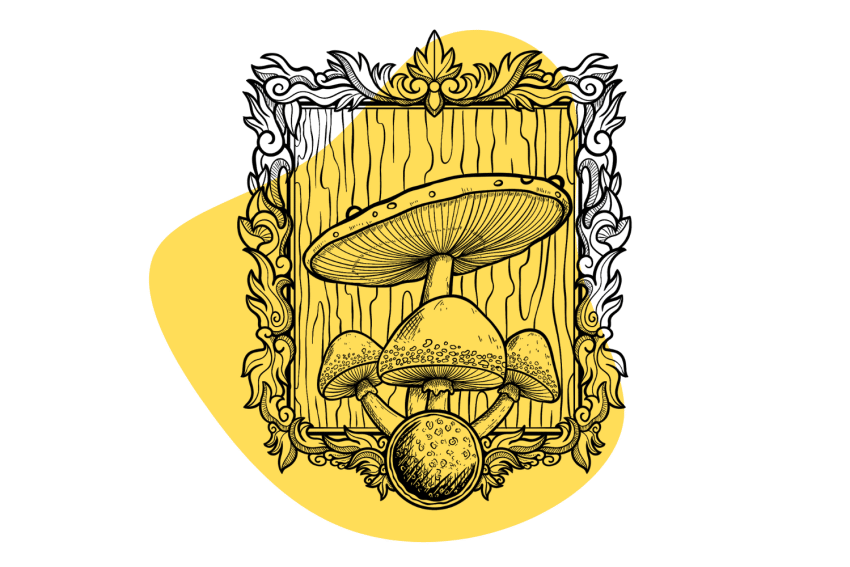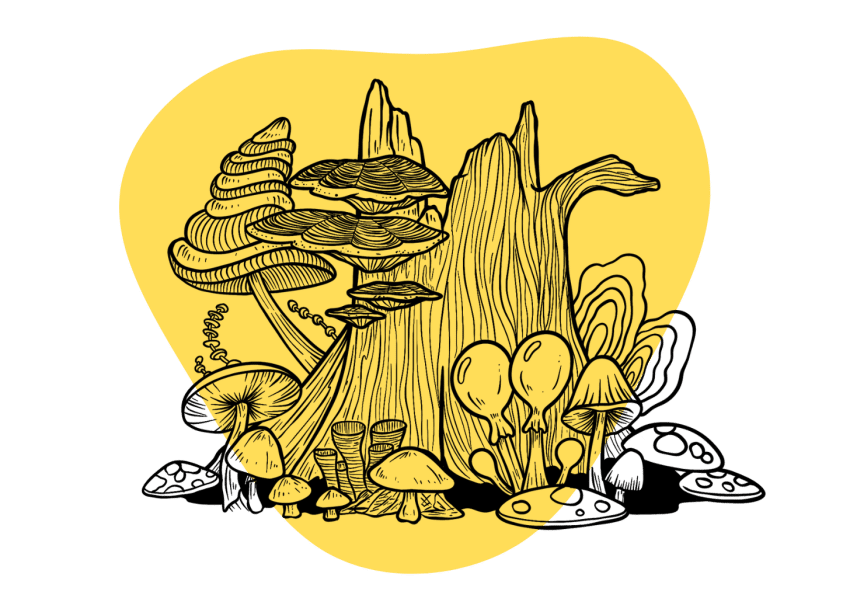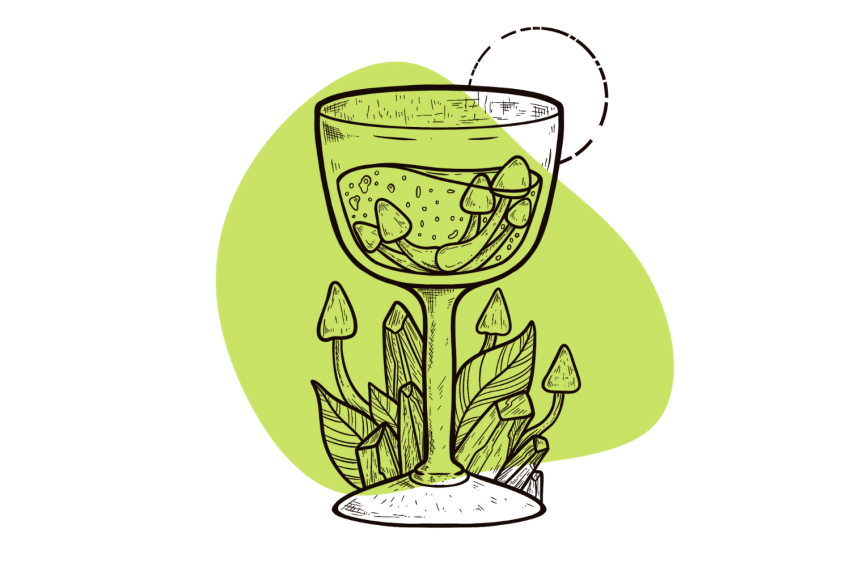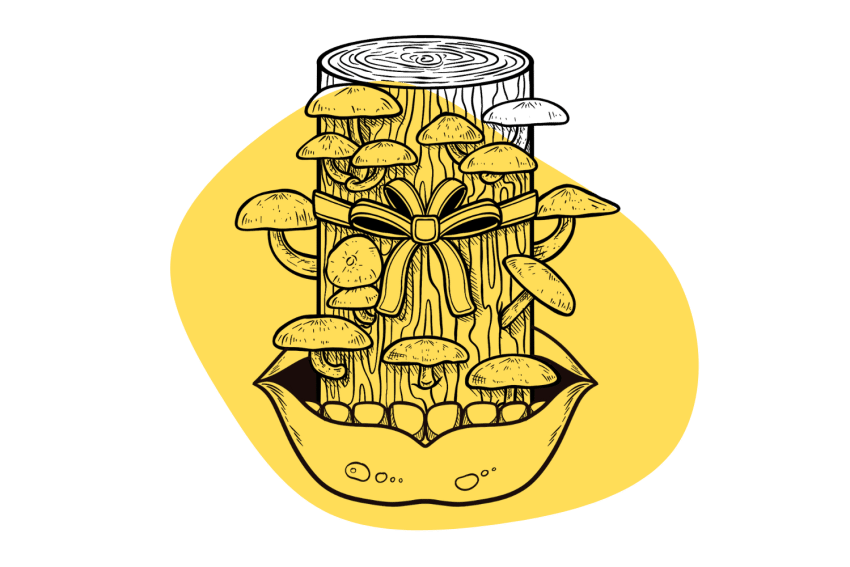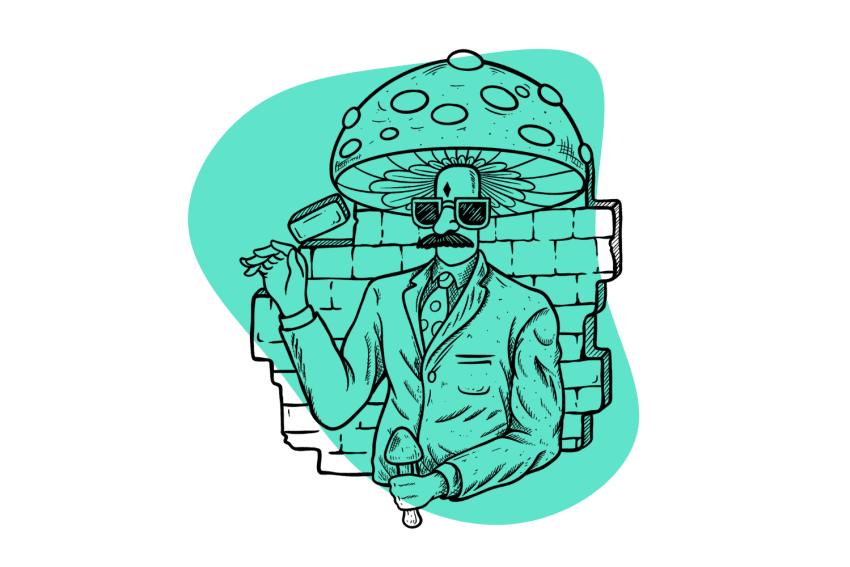Pink Oyster Mushrooms (Pleurotus djamor) Explained
Pink Oyster mushrooms have a long history of traditional use, and their popularity has grown greatly in recent years — here’s why that is and a case for jumping on the trend:
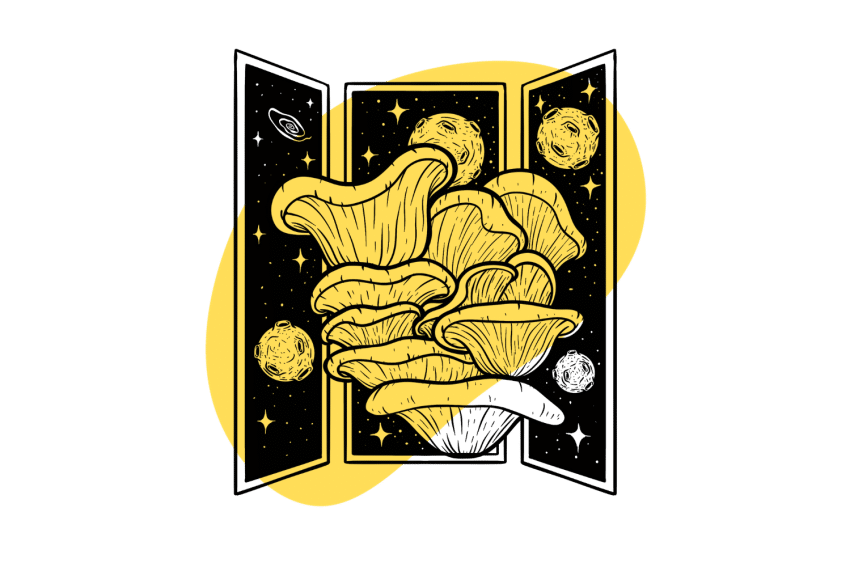
Mushrooms are remarkably complex and offer a wide variety of potential. Depending on the mushroom you eat, you could have a psychedelic experience, die, become very sick, or bolster your health.
Pink Oyster mushrooms belong to a category of mushrooms we call “functional mushrooms,” — meaning they have potential health benefits beyond simple nutrition. All edible mushrooms are usually rather healthy, but only functional mushrooms actively help systems within the body.
With a long history of cultures claiming Pink Oysters had medical value, it shouldn’t come as a surprise to hear this. As our research starts to catch up with the ancestral knowledge we have largely ignored, Pink Oysters are growing in popularity as more people catch on to their potential.
Pink Oyster Mushrooms At A Glance
| Taxonomic Name/Classification | Pleurotus djamor, in the Agaricales order of the Agaricomycetes class |
| Characteristics | Gilled mushroom with an offset cap, bare stipe, pink in color (spores too) |
| Nutritional Value | High in protein, dietary fibers, and amino acids with varying (often low) levels of carbohydrates |
| Taste and Texture | Raw mushrooms have a spongy texture with a metallic taste, but cooking them makes their texture meatier and brings out a fishy/chicken-like taste. |
| Traditional Use | Dietary conditions like diabetes, high blood pressure, or cholesterol, as well as constipation and parasitic/fungal infections [1] |
| Medicinal Value | Research suggests anti-tumor activity, immune system support, and antioxidant qualities [2] |
| Natural Climate | Humid, wooded areas in tropical climates especially common in Mexico but widespread distribution globally |
| Cultivation Difficulty | Very easy |
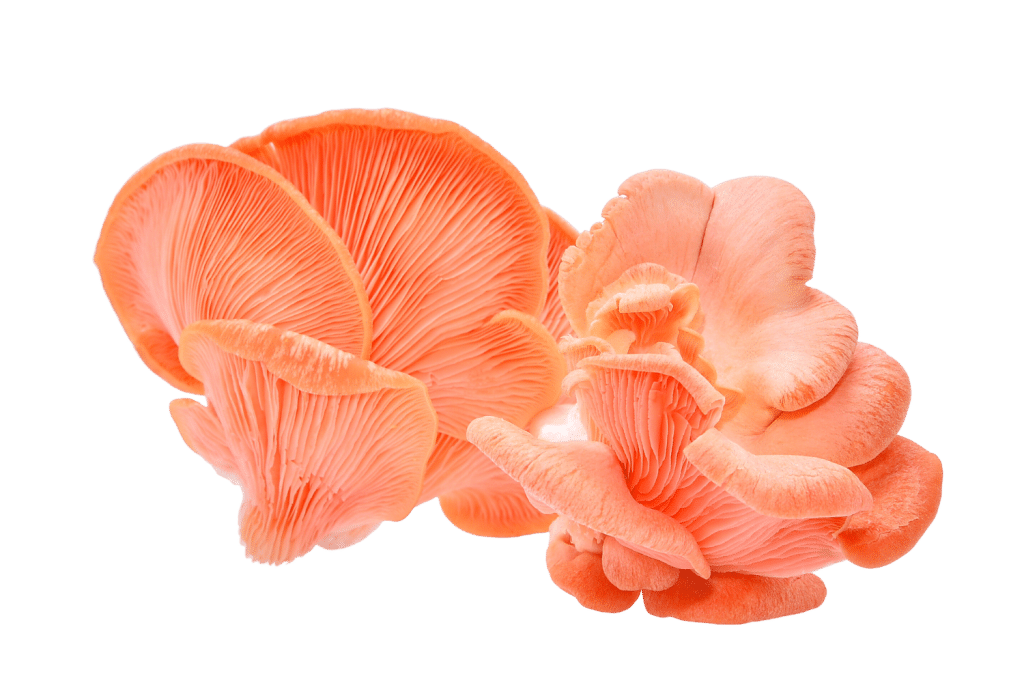
What Are Pink Oyster Mushrooms?
Pleurotus djamor (“Pink Oyster” mushrooms) are a delightful gourmet mushroom species. Research suggests they offer a tremendous nutritional benefit to any dish they may be in.
With a meaty texture and taste, vegan and vegetarian diets especially benefit from adding oyster mushrooms as a meat alternative. This is true for most of the Pleurotus mushrooms, which contain a variety of colors and shapes with many similarities among them.
Similar to tofu, mushrooms also soak up the flavors of whatever dish you add them to, enhancing whatever you’re cooking up. Cooked alone, people frequently compare the taste of Oysters (and several other gourmet mushrooms) to lobster, beef, or chicken.
Nutritional Value of Oyster Mushrooms
Along with the delightful taste and texture of adding oyster mushrooms to your dish, you can also expect a solid nutritional benefit from doing so. Pink Oyster mushrooms — and most other Pleurotus species — offer [2] :
- High Protein Content — 30-40% of the entire weight of an oyster mushroom may be protein content, making it a fantastic way to fuel up
- Essential Amino Acids — Oysters contain all of the essential amino acids we need to function but don’t create on our own (these are important for energy, health, and more)
- Fiber and Carbohydrates — Though variable, carbs are frequently low, and fiber is often high, making these filling and healthy for your digestive system
Traditional Use of Pink Oyster Mushrooms
Cultivation of the Oyster mushroom dates back to at least the year 600 in ancient China [3]. Several indigenous beliefs revolved around the capabilities the mushroom had, and it was a part of various traditional medicines.
Some of the things Oyster mushrooms were said to help with include [1]:
- Reducing cholesterol
- Lowering blood pressure
- Constipation
- Parasitic infection
- Ulcers and intestinal inflammation
These are just five out of over 30 different “diseases or disorders” societies believed Oyster mushrooms could assist with. From what we know, with the nutritional information alone, it’s easy to see how some of these are possible.
Given, for example, the high dietary fiber content of mushrooms, it makes sense it might help with constipation. Additionally, replacing less healthy foods or options with the delightful taste and value of an Oyster mushroom could make sense in helping with cholesterol or blood pressure.
As research is starting to look into Oyster mushrooms, it’s looking like there could be a great deal more to the story than this.
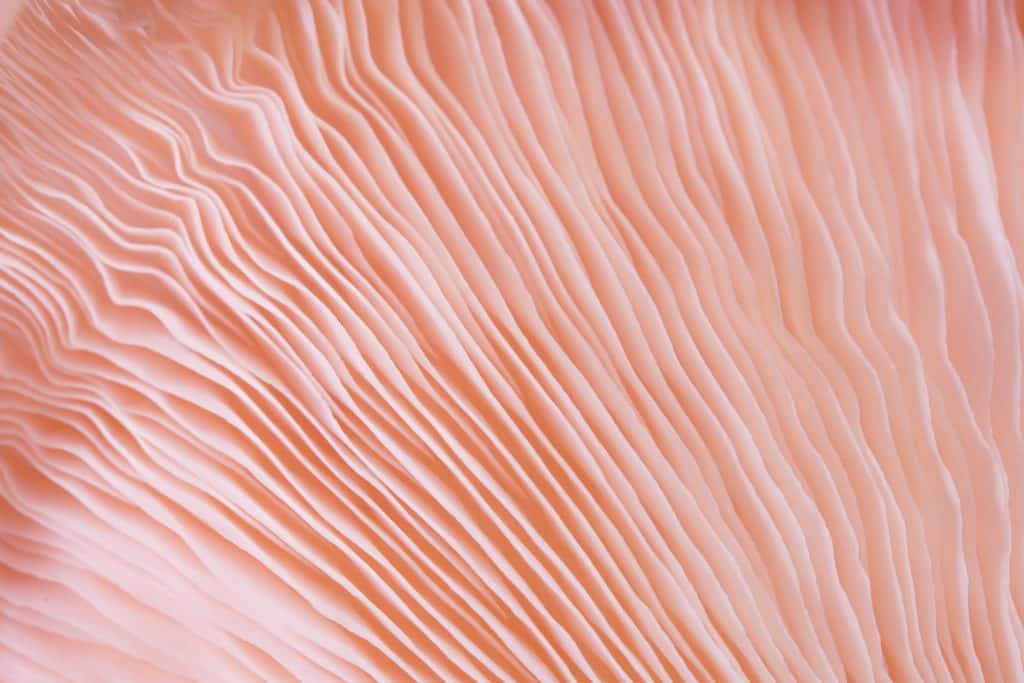
Health Benefits of Pink Oyster Mushrooms
Though the findings aren’t yet conclusive, some research suggests a good deal of potential health benefits to consuming Pink Oysters. In fact, all of the Pleurotus genus of mushrooms seem to be tremendously helpful to add to your diet.
A review in 2012 broke down all the research to that point and found oyster mushrooms may show the following properties [4]:
| Antioxidant | With high levels of antioxidants, Oyster mushrooms can assist with maintaining health, building immune systems, and reducing the effects of carcinogens and other mutated cells. |
| Antilipidemic (Prevents Low Lipid Levels) | The high presence of lipids — essential building blocks for all cell functions — within Oyster mushrooms can assist with lowering cholesterol levels to improve heart health. |
| Anti-Hyperglycemic | Hyperglycemia (elevated sugar levels) is a primary component of diabetes. Some research suggests Guanide — a compound in Oyster mushrooms — can ward off this state, lending some credibility to the indigenous claims. |
| Hypotensive (Lowers Blood Pressure) | Oyster mushrooms may help lower blood pressure, potentially through inhibiting angiotensin-I converting enzymes (ACE) — a similar method for treating hypertension in many cases. |
| Anti-Inflammatory | Oysters may down-regulate mediators in the body responsible for inflammation and/or increase the production of anti-inflammatory agents. |
| Hepatoprotective (Protects The Liver) | Hepatoxicity (damage to the liver) is common with various medications and can lead to serious concerns, but some of the compounds in Oyster mushrooms may help fight this off by removing free radicals and activating antioxidant enzymes. |
| Hypocholesterolemic (Lowers Cholesterol) | In addition to the high lipid content helping to ward off cholesterol, some compounds within Oyster mushrooms may also actively lower cholesterol content. |
| Immunomodulatory (Moderates Immune System) | Through various potential mechanisms, Oyster mushrooms may help modulate and bolster the immune system to help ward off diseases and carcinogenic cells. |
| Anti-aging | Along with the helpful antioxidant properties that can assist with this, high levels of vitamins C and E, along with other compounds, also help to slow the aging process and “age-related disorders like stroke, Parkinson’s,” and more. |
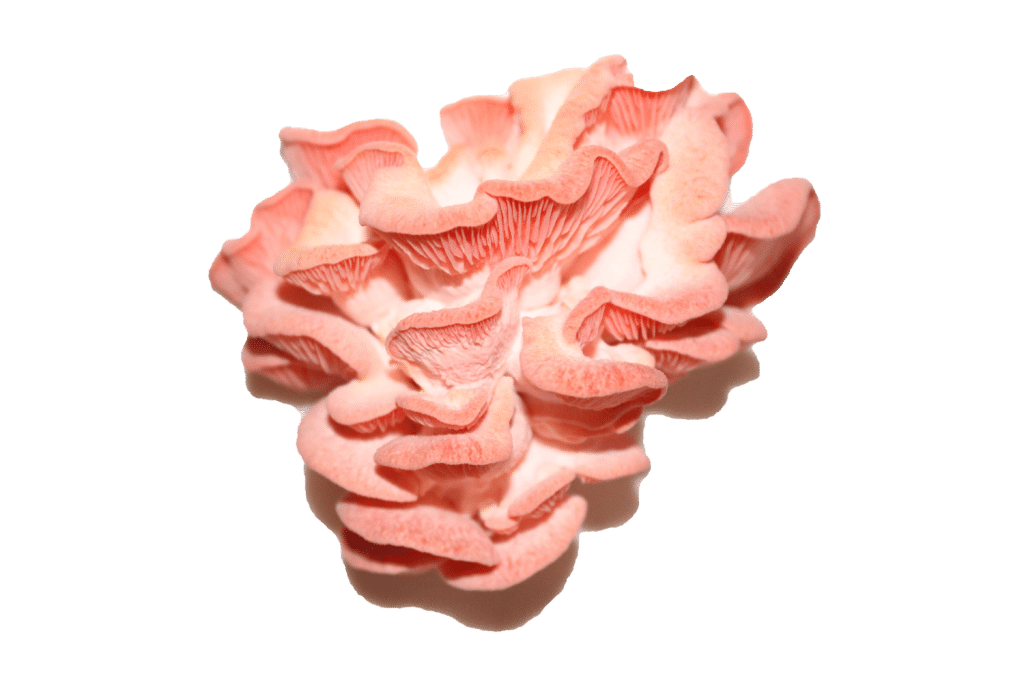
Where To Find Pink Oyster Mushrooms
Oyster mushrooms of all varieties (Pink Oysters included) grow abundantly throughout the world. They largely exist in hot, humid climates with heavily wooded areas since they feed on decaying wood most frequently.
Pink Oyster mushrooms are wildly popular in Mexico [5], where there are “seven different common names…related to the beginning and end of the rainy season.” This points to an incredible significance within the culture — of which as much as 98% of edible mushrooms sold may be some form of Pink Oyster.
How To Grow Pink Oyster Mushrooms
Growing Pink Oyster mushrooms is relatively easy, and it’s a beginner-friendly mushroom to try and work with. Many companies even sell grow kits you can easily open, spray with water, and grow at home.
If you want to grow your own Pink Oysters from spores, you’ll need to locate some spores or create a spore print and syringe/agar plate on your own. From here, you can follow a similar process to Uncle Ben’s Tek or utilize your own sterile grain spawn bag.
Instead of transferring your spawn to a bulk substrate as you would normally do for magic mushrooms, you can grow your Oysters straight from the bag they’re in.
Here’s the step-by-step process for growing your own Oysters from a spore syringe or cultured agar:
- Section off your agar and mix it in with your grain, or inject the spores into your grain bag and give it a light shake to help mix it in more
- Place your grain bag in a dark location at room temperature or slightly above
- Break up your mycelium brick and mix it in with the rest of your grain when it’s taken over ¼–½ of the grain
- After it’s fully taken over the bag, cover all of it except for a single window to block off light (duct tape the rest of the bag or place it in a box)
- Cut an “X” in the front and spray lightly with water 1–2 times a day
- After a couple of your mushrooms have fruited, and their caps expand, it’s time to harvest.
Remember, mushrooms are quite delicate, and the spores mature mushrooms drop after opening their cap can bruise the other mushrooms growing below.
Related: How to Grow Magic Mushrooms
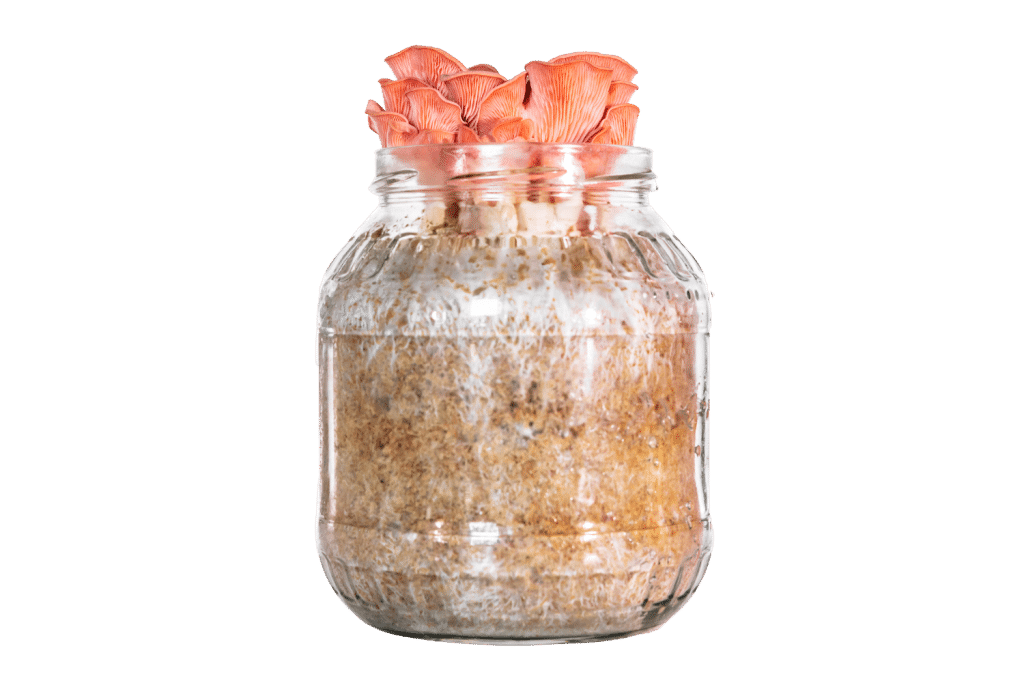
Cooking with Pink Oysters
Replacing meat with Pink Oysters is the easiest way to use them — simply cook them as you would lobster, chicken, or any other meat (for less time, obviously). Additionally, you can add them to your dish, and they will soak in the flavors of the meal you add them to.
My favorite thing to do with Oyster mushrooms is to bread them and fry them in a pan as a fried chicken substitute. If you’re new to vegetarian cooking, this will surely end whatever cravings you may have for the real thing.
References
- Guzmán, G. (2000). Genus Pleurotus (Jacq.: Fr.) P. Kumm. (Agaricomycetideae): Diversity, Taxonomic Problems, and Cultural and Traditional Medicinal Uses. International Journal of Medicinal Mushrooms, 2(2). doi.org/10.1615/IntJMedMushr.v2.i2.10
- Chang, P. G. M., Shu-Ting. (2004). Mushrooms: Cultivation, Nutritional Value, Medicinal Effect, and Environmental Impact (2nd ed.). CRC Press. doi.org/10.1201/9780203492086
- Nutritional and Antioxidant Values of Oyster Mushroom (P. sajor-caju) Cultivated on Rubber Sawdust. (n.d.). Retrieved August 24, 2023, from https://www.researchgate.net/
- Patel, Y., Naraian, R., & Singh, V. (2012). Medicinal properties of Pleurotus species (Oyster mushroom): A review. World J Fungal Plant Biol, 3, 1–12. https://www.researchgate.net/
- Mérida Ponce, J. P., Hernández Calderón, M. A., Comandini, O., Rinaldi, A. C., & Flores Arzú, R. (2019). Ethnomycological knowledge among Kaqchikel, indigenous Maya people of Guatemalan Highlands. Journal of Ethnobiology and Ethnomedicine, 15(1), 36. doi.org/10.1186/s13002-019-0310-7

